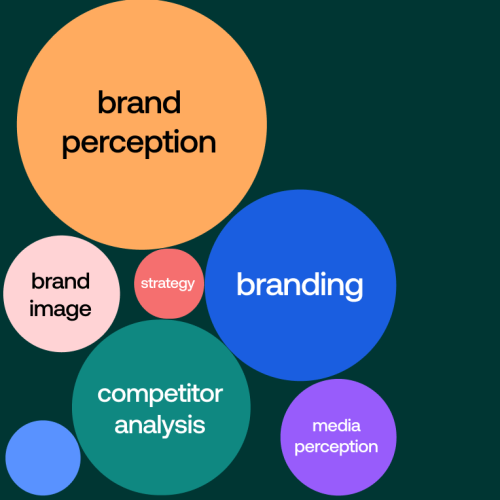When your brand’s reputation takes a hit, it can be devastating to your bottom line. A reputation crisis can lead to financial losses, the market value drops, and even bankruptcy or liquidation if left unchecked.
But there is still hope! With the right strategy and approach, you can rebuild your brand’s image and restore its former glory.
This article will provide key insights into how to effectively deal with brand damage and help you take back control of your public perception.
We’ll explore what causes a reputation crisis in the first place, how to identify signs of impending disaster early on, as well as strategies for rebuilding trust with customers after an event has already occurred.
? Read Brand Reputation 101: Monitoring, Analysis, and Management Tools
By following these steps, you’ll be able to save your company from potential catastrophe and put yourself back on track toward success!
What Is Brand Damage?
Brand damage is the reputational risk a company takes when it fails to live up to its promises or otherwise its attractiveness diminishes.
When companies claim to have certain qualities, whether that be good customer service or a stellar product lineup, customers often begin to come to expect those traits.
If the company fails to meet its standards, customers will feel let down. This leads to reputational damage and sales losses over time.
Brand damage is always harmful, so companies should ensure they uphold their promises consistently to maintain a trusted place in the marketplace.
Step by Step Instructions On Dealing With Brand Damage
#1 Analyze the level of damage caused

Brand damage can be a tricky issue to deal with, but the first step is the same in any brand reputation management process – figuring out how much brand damage has been done.
It’s crucial to take some time for proper analysis if you want to prevent further reputational risk and reposition your brand in the market afterwards.
Every brand and situation is different, so there’s no universal approach for analyzing brand damage and resolving it. Effective brand reputation management requires case-by-case solutions that address existing concerns and manage future risks.
#2 Understand complaints your brand already receives
Dealing with brand damage is a tricky situation to navigate, but it’s a necessary part of running a company.
The second step in mitigating potential losses from brand damage is understanding the complaints your company already receives.
Gathering this data makes it easier to identify areas of reputational risk and assess their impact on the company’s reputation.
Remember – reputational risk management isn’t something that you can do once. Ongoing monitoring of customer feedback and responses is key to staying ahead of any issue that could crop up.

#3 Plan your media communication strategy
Crafting a media communication strategy is essential in dealing with brand damage. After acknowledging and apologizing for the issue, media inquiries are likely to come rolling in.
How you respond is crucial. It’s important to plan media conversations carefully. You want to be sure that your key messages send out the right tone and image that restores trust in your brand image, rather than further damaging it.
Keep your responses concise but comprehensive, so that media outlets have what they need for their stories, but don’t give them a reason to sensationalize.
Thoughtfully constructing media communication cannot be taken lightly – wisely use it as an opportunity to rebuild your brand’s credibility.
Read A Simple Guide to Corporate Reputation Management
How to plan a media communication strategy
You can use a media monitoring tool, like Determ, to plan your media communication strategy. This can help you protect your brand and restore trust among customers.
With Determ, you can track conversations about your brand across all social media platforms, including Facebook, Twitter, Instagram, YouTube, and LinkedIn.
You’ll be able to see which topics are generating the most conversation and how people are reacting. This enables you to quickly assess the situation and craft a response that puts out the right tone and image.

You’ll also be able to set up alerts for specific keywords so that you can monitor when people might be talking about your brand or a related topic, or when there is a particular increase in the number of mentions of a particular topic (Spike alerts). This helps ensure that no stone is left unturned and allows you to stay ahead of any potential negative press.
Plus, with a tool like Determ, you can identify emerging trends before they become too overwhelming or damaging. This will give you time to gather all of the facts needed for crafting an effective response.
For example, if there’s an issue with one of your products or services, it’s important to acknowledge it publicly right away rather than trying to ignore it or hide it from view. Acknowledging what happened shows that you take responsibility for any mistakes made and provides customers with clear information on how it was addressed.
With Determ’s alerts and analytics tools at hand, you’ll be able to identify any negative press early on. This way you can respond quickly and minimize the damage done by false stories circulating online.
Read Corporate Reputation: What is it and How to Protect it

Determ reports
With Determ’s reports, you won’t just be able to understand conversations about issues related to your brand, you will also be able to get a detailed overview of how consumers perceive your company across all channels including news outlets, blogs, and forums. Therefore, you can create more tailored messaging campaigns that address their concerns in an honest but respectful manner.
In short, using a media monitoring tool like Determ can provide invaluable help when crafting an effective communication strategy. This applies especially in cases of brand damage. You can quickly identify key messages and get essential insight into consumer sentiment. It could otherwise take days or weeks to collect manually.
Read 5 PR Report Templates and Hacks to Instantly Prove the Value of Your Work
#4 Forge connections with influential stakeholders and investors
When it comes to preventing reputational risk, corporate executives should take the initiative to forge connections with influential stakeholders and investors to protect their brand.
From this useful relationship, both parties gain information and insight into current trends, access to networks, trust building, and most of all, mutual support between them.
In this way, executives can build a more resilient organization with its stakeholder groups against possible reputational risks.
Such a connection is especially helpful during times of turbulence or when making unpopular decisions where there is a higher risk of backlash from a wider audience.
#5 Prioritize powerful internal communication

When a reputable brand has suffered from damaging stories or events, internal communication must be prioritized.
This informal communication allows employees to have an understanding of their role in repairing the corporate reputation. Top executives can provide guidance and support for the internal audience to facilitate progress toward healing brand damage.
For example, inspiring group conversations can focus on topics such as resolving customer complaints and building rapport with stakeholders.
Along with this type of comprehensive support, clear guidelines to integrate important values and share corrected facts should be provided internally by management.
Ultimately, powerful internal communication is a crucial step in the process of regaining a reputable position in the industry after any cases of brand damage.
#6 Renew your social media response strategy
Being active on social media platforms isn’t just about branding yourself– it’s a great way to help repair any damage done to your reputation.
Once you’ve regained control of your brand, the next step is to renew your social media response strategy.
With a sharp eye and reactive attitude, shape public perception by responding swiftly and thoughtfully to anything out of ordinary on any social media platform – it only takes one angry customer or even the wrong tweet to shape a future narrative about your brand across the online community.
This will help keep any brand-damaging situation from spiraling out of control. Furthermore, pay attention to how other people talk about your brand – take feedback seriously and use them to tweak your response further as needed.
Being active on social media platforms is an important step in resolving any issue with damages your reputation.
#7 Be upfront and honest when addressing public matters
In addressing such crises of brand damage, it is of the utmost importance to take an upfront and honest stance.
Honesty and openness can help to regain consumer trust as no one likes being misled. Additionally, being honest when dealing with public matters in bad times helps build positive brand equity which is invaluable in the long run.
While transparency is always necessary when it comes to customer holdings or dealings, acting forthright during times of crisis requires a high level of integrity but will be worth it in the end.
#8 Rebuild customer trust and reinvigorate corporate values
Rebuilding customer trust and reinvigorating corporate values is no small feat. After a major mishap, budgeting for initiatives that help rebuild public opinion is key.
Doing customer service outreach, creating positive messaging around core values, or even open letters can be effective tactics for rebuilding relationships with customers.
Though challenging, companies must develop positive marketing strategies to rebuild their brand’s reputation.
#9 Look into the future

Once the process of addressing and repairing brand damage is complete, now you must look into the future.
As business owners, it’s important to reflect on lessons learned from whatever caused the brand damage so that similar lapses in judgment can be avoided down the line.
Asking questions such as:
- What could have been done differently?
- What safeguards are now needed?
- Will there be negative public reactions again if certain steps are not taken?
These will give insight into what strategies should be implemented to protect the company against harm done to its reputation in the future.
Read 6 Steps To Build a Brand Marketing Strategy
This step of looking towards the future is essential. Investing time and resources into prevention will ensure a smoother ride ahead.
Wrap Up
Rebuilding your brand’s reputation after a brand crisis isn’t an easy feat, but it is possible. By following the steps outlined in this article, companies can start to restore their credibility and trustworthiness in the eyes of customers and stakeholders.
Though it may take time to see positive results from your efforts, with dedication and hard work you can restore public opinion about your brand. With that said, if you ever find yourself struggling to recover from any type of brand damage, don’t forget that there are resources available to help get back on track! Good luck!
Josef Mohamed is a Content Marketer and Web Designer who writes about Marketing, Technology, and other related topics. He is the founder of Josefmohamed.com, where he shares his knowledge and expertise.






